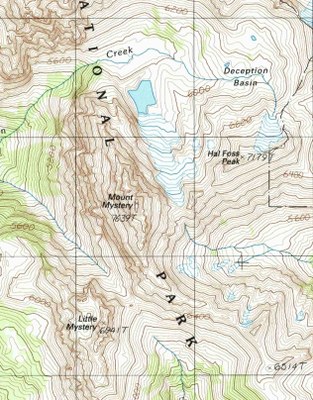
Navigation Course
Wilderness Navigation
The wilderness navigation course provides you with the knowledge, skills and experience to competently find your way in the wilderness - on and off trail.
- Mon, Oct 17, 2016 - Sun, Oct 30, 2016
- Committee: Kitsap Navigation Committee
- Members: $55.00 Guests: $75.00
- Availability: FULL (14 capacity)
- Cancellation & Refund Policy
The Wilderness Navigation course is a pre-requisite for graduation from other Mountaineers' courses, such as Basic Alpine Climbing, Alpine Scrambling, and Backcountry Snowshoeing. Students who successfully complete this course will receive the Navigation badge on their online Mountaineers profile.
Sign Up Procedure:
Please register and pay for the Kitsap Basic Navigation course online at mountaineers.org. Alternatively, you can sign up and pay for the Kitsap Basic Navigation course over the phone by calling Mountaineers Member Services at (206) 521-6001.
Compass - required compass features
Each student must have a "Mountaineers approved" compass before attending the classroom session. You will not be able to share a map or compass during the classroom session or the field session, and an acceptable compass is required in order to do the classroom exercises and the field exercises. An acceptable compass has the following required features: adjustable declination, sighting mirror, transparent 3-4 inch base plate with direction of travel arrow, meridian lines, a full-length declination arrow or parallel lines, a bezel that is at least 2 inches in diameter and that is marked clockwise from 0 to 360 degrees in increments of 2 degrees or less. Recommended but not required features include a liquid filled housing to reduce erratic needle movement and an inclinometer to measure slope angle. Some acceptable compasses include Brunton 15TDCL; Brunton Nexus Elite Compass; K&R Sherpa BW2 Sighting Mirror Compass; K&R Alpin Sighting Compass; Silva Ranger 515 CL Sighting Compass; Suunto MC-2D IN Mirror Sighting Compass; Suunto MC-2G Sighting Mirror Compass.
It is best to shop for your compass well in advance of the classroom session, because acceptable compass models may be sold out or hard to find. We recommend that you bring the list of required compass features and acceptable compasses with you when you shop to be sure you get the right compass.
The foregoing compass features will allow you to maximize your map and compass accuracy as you learn the techniques taught in this course and covered in the required textbook.
Required Book and reading
BEFORE the classroom session, each student must purchase and read this entire book (~135 pages) : "Wilderness Navigation , Finding Your Way Using Map, Compass, Altimeter and GPS", 2015 (3rd Edition), by Bob Burns and Mike Burns. It is a Mountaineers book, and can be ordered online from Mountaineers Books, with a 20 percent discount for Mountaineers members.
Mountaineers members can also purchase the book at the Mountaineers Bookstore in the Seattle Mountaineers Program Center. A lot of material will be covered in the classroom session, and it is critical that you have read the entire book before the classroom session.
Classroom session
The classroom session is held at the Kitsap Cabin, 3153 Seabeck Highway NW, Bremerton, WA. Be sure to bring your compass that complies with course requirements and your Wilderness Navigation book. You will be given a quiz designed to test your competence in map, compass, and navigation skills, so it is critical that students read and understand the principles covered in the book before arriving at the classroom session.
Field Session
Students who successfully complete the classroom session will participate in the field session, which involves a number of activities that test your knowledge of navigation principles. Successful completion of the field session is required in order to earn your Navigation certification. For the field session, you will be traveling steep, rough terrain on Gold Mountain, west of Bremerton. Challenges include following bearings over logging slash covered by brush and blackberry vines or through dense forest. You'll need appropriate clothing and footwear, including hiking boots, sturdy rain gear, extra warm garments, hat and gloves. Bring your Ten Essentials, lunch and extra food, plenty of water, and ziplock bags of at least 1 gallon size to protect maps and other handouts. Copies of the appropriate USGS topo map will be provided for use in the field exercises. Even when it is not raining or snowing, the brush you'll be traveling through is usually wet, so do not wear cotton clothing and be sure to bring your rain gear. The field session usually ends mid-afternoon, but the ending time varies and everyone will stay until the last student returns to the parking lot.
Badges you will earn:
This course has no scheduled activities.
Wilderness Navigation, 3rd edition is required. Complete study of the book and complete all contained exercises prior to class.
A Mountaineers approved compass is required for both the seminar and field session.
10 essentials required for the field session.
| Name/Description |
|---|
| USGS Baring Map.pdf |
| USGS Wildcat Lake.pdf |
| Green Mountain DNR Map.pdf |
| USGS_Topo_Map_Symbols.pdf |
| ISU UTM Paper An additional explanation of the UTM grid system. |
| USFS Map Scales Fact Sheet - FS105-02 Paper describing the various USGS map scales. |
| Kitsap Branch Wilderness Navigation Course Outline Topic outline of the course that covers eLearning and classroom versions of the course. Updated January 2018 to include electronic navigation planning using CALTOPO. |
| USGS_UTM.pdf |


 Basic Navigation Course
Basic Navigation Course